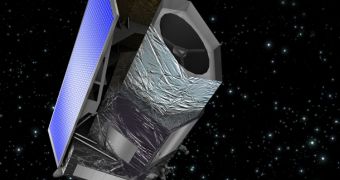The European Space Agency (ESA) plans to launch a new mission to study the very nature of the Universe. Scheduled for takeoff no earlier than 2019, the Euclid spacecraft will have an extremely complex goal – map the cosmic distribution of more than 70 million galaxies.
Compiling an atlas detailing the position of all these structures will finally enable scientists to figure out how dark matter and dark energy influence the Universe, or at least this is what ESA experts hope.
There are currently no guarantees that Euclid will be able to reveal the nature of dark matter or dark energy. At some point, someone will have to do it though, because the former accounts for 23 percent of the Cosmos' mass-energy budget, whereas the latter makes up 73 percent of the same budget.
ESA says that its new telescope will investigate the Universe in optical and infrared wavelengths. This will help it identify and confirm galaxies. Astronomers will then be able to catalog each of these objects, and put it in a catalog, alongside other galaxies.
Since dark matter and dark energy cannot be detected directly, but rather only through their effects on regular, baryonic matter, studying the large-scale motions of the latter is absolutely essential. Dark matter, specifically, influences regular matter exclusively through gravitational pulls.
The telescope itself will have a 1.2-meter (3.9-foot) aperture, which will feed light into a 576 million-megapixel optical camera. The entire spacecraft will weigh just 2,160 kilograms (4,760 pounds). ESA estimates that the project will cost about $788 million.
According to European researchers, the near-infrared camera aboard Euclid will be responsible for measuring cosmic acceleration, which is the speed at which galaxies move away from each other. Currently, experts believe that this acceleration is constantly increasing.
“Euclid is designed to study the dark Universe. Euclid will deliver images of Hubble-like clarity across a third of the sky. Such a measurement is impossible from the ground,” explains the Euclid Consortium communications leader, Bob Nichol, in an email interview for Space.
“Through measuring how the amount of dark matter changes with time, we can constrain dark energy,” the ESA expert adds. At the same time, Euclid will keep a close eye on galactic redshift, which is the amount by which light shifts from the wavelengths it was released in towards the redder portions of the electromagnetic spectrum.
Nichol concludes by saying that he expects the ESA Euclid Telescope to resolve a wide range of issues currently still plaguing astronomy and astrophysics.

 14 DAY TRIAL //
14 DAY TRIAL //